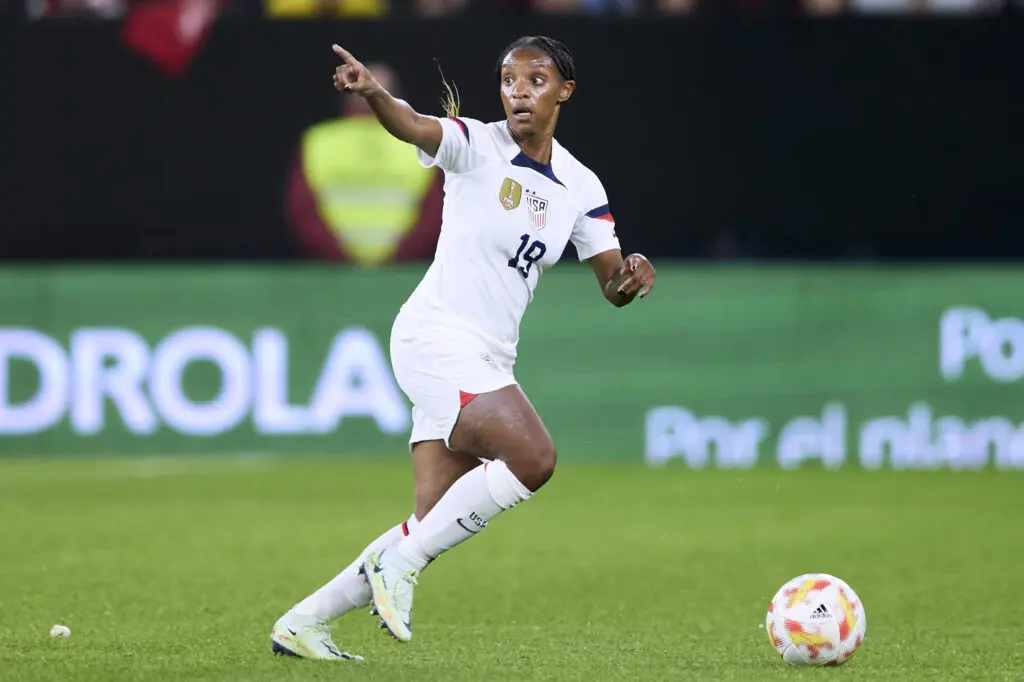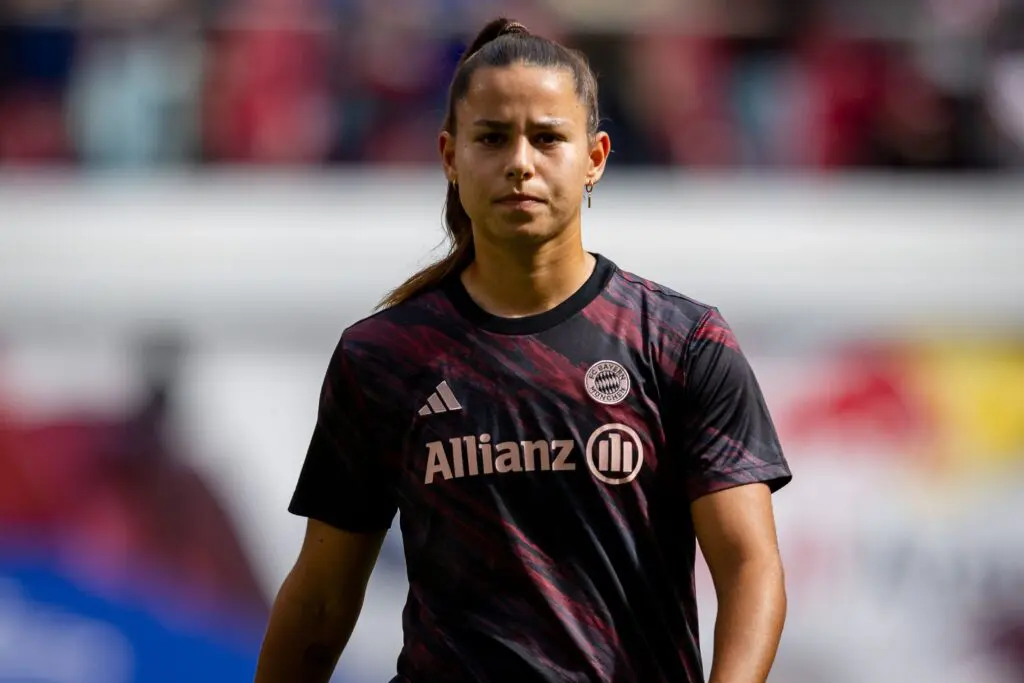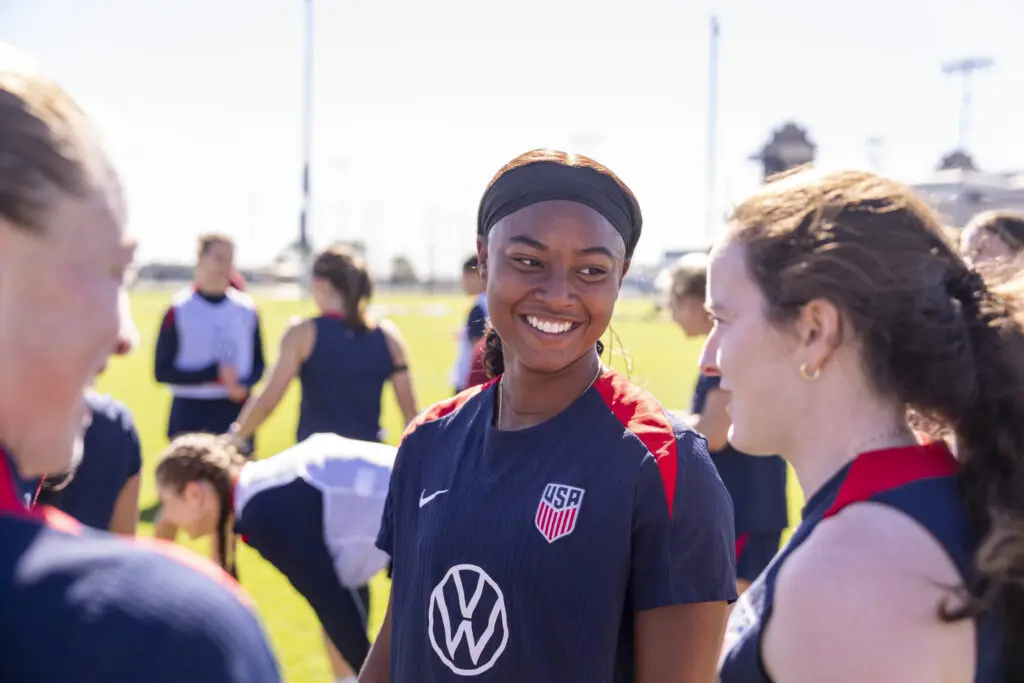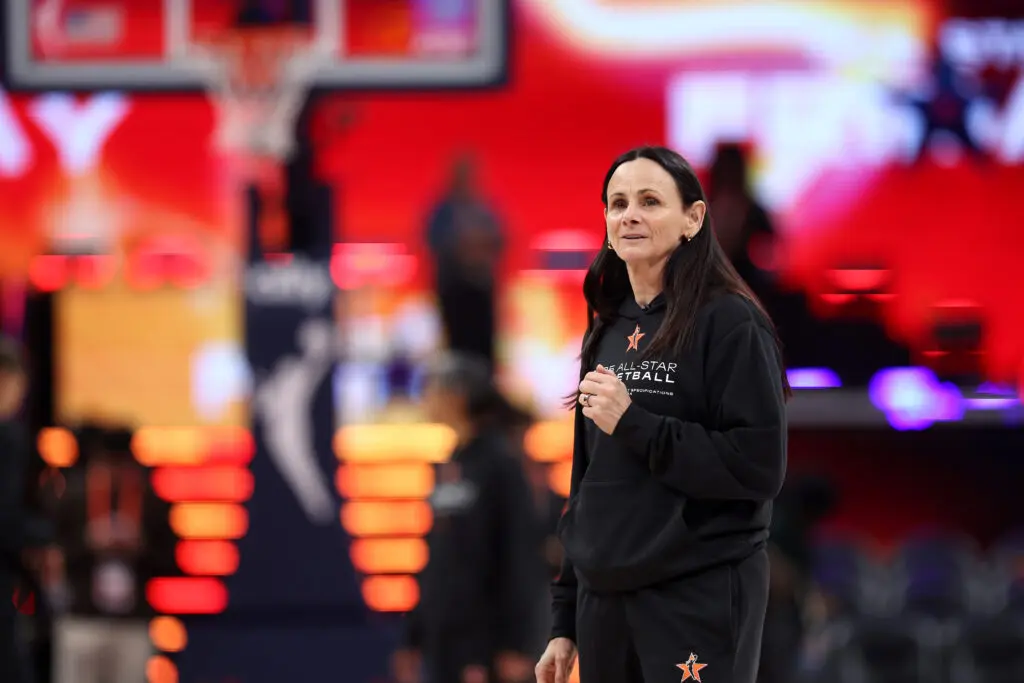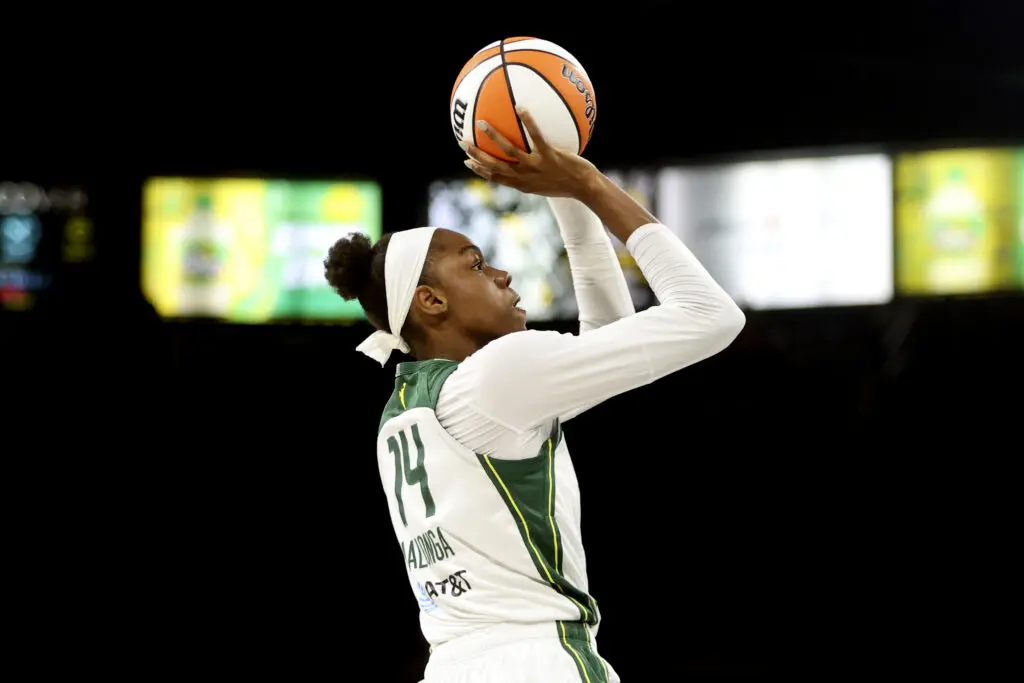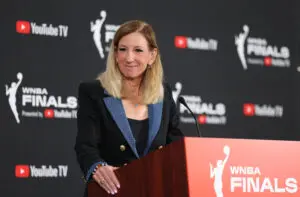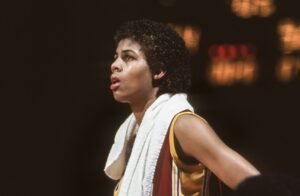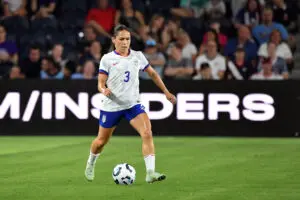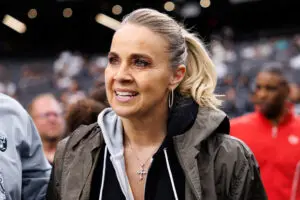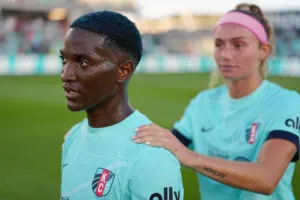There’s no doubt about it: The U.S. women’s national team has missed Crystal Dunn. Off the field for most of 2022, the 30-year-old has been working her way back into soccer fitness after giving birth to her son, Marcel, in May. As Dunn gets closer to a full return, one big question has lingered: Where on the USWNT roster would she play?
Dunn began her USWNT career as a forward after winning the NWSL Golden Boot and MVP awards in 2015, but her versatility has been utilized heavily over the years. On the two U.S. rosters she’s made in 2022, she’s been listed as a defender, having carved out a role at outside back during the USWNT’s run to the 2019 World Cup title. For her club, however, she consistently plays in the midfield and has been very open about her preference to thrive in a position where she feels most comfortable.
All current signs point to Vlatko Andonovski’s intention to have Dunn return to outside back, but for the sake of the argument, let’s do a brainstorming exercise. What would it look like to play Crystal Dunn in the midfield? And could the USWNT use her there?
Let’s explore.
It’s not a new role
The idea of Dunn playing in the midfield doesn’t come out of nowhere; she’s assumed that role successfully for her club teams for years. After playing for the Washington Spirit and Chelsea as a forward early in her career, Dunn joined the North Carolina Courage’s box midfield in 2018. Paired in the attacking midfield with Debinha, and supported by defensive midfielders Sam Mewis and Denise O’Sullivan, Dunn helped North Carolina rise from a contender to a league-crushing super club.
The Courage won the NWSL Shield and Championship in 2018 and 2019, with Dunn’s playmaking ability and defensive tenacity at the heart of that success. In 2019, she won every domestic trophy possible as an attacking midfielder while also playing as a starting outside back for the USWNT in the World Cup. The toll it took on her was noticeable at the time.
“I struggled mentally. I had to take some time off from this club,” Dunn told the media in 2019. “Because I was battling, trying to be the world’s best [No.] 10, the world’s best forward on this team, and then go into national team camp.”
In 2021, Dunn joined Portland’s midfield, working in a dual-No. 8 system with Lindsey Horan. She and Horan would drift off of each other’s movements, anchored by the stellar play of Angela Salem behind them. Dunn appeared comfortable moving into wide and central areas while coordinating with Horan for pressing triggers on defense.
That Thorns team won the NWSL Shield, but the Mark Parsons-led midfield project was cut short by Dunn’s pregnancy, Horan’s subsequent loan to Olympique Lyon and Parsons’ departure for the Netherlands head coaching job. Dunn returned to Rhian Wilkinson’s Thorns in the last couple of months of the 2022 NWSL season. Coming in late to games, Dunn replaced other connecting midfielders as the No. 8 and helped seal results, including this year’s NWSL Championship.

A defensive-minded midfielder
The world was reminded of what Dunn can bring in the attack when she smashed the semifinal game-winner that sent Portland to the 2022 NWSL title game. There’s also the argument that the USWNT doesn’t lack attacking talent, and it’s difficult to carve out Dunn’s place as a forward-hybrid when a number of other qualified players can’t break into the player pool in the same position.
Dunn’s experience as a wide defender, however, shouldn’t be used against her possible inclusion in the midfield; in fact, that versatility should be considered an asset. In her short time back with Portland in 2022, Dunn’s energy as a 1v1 defender from an advanced position made closing out games very difficult for her opponents.
Dunn’s recovery speed could also be a big help in the middle of the pitch. The USWNT has struggled to shore up space in front of the center-backs against top competition, employing a lone defensive midfielder despite the prolonged absence of Julie Ertz. The USWNT’s No. 6 has been caught on an island at times, leaving other players unsupported in the middle of the pitch.
In recent international games, every USWNT midfielder has had to decide whether to step up defensively or fall back into an off-the-ball position. Dunn’s decisiveness as a connecting midfielder could make a huge difference as the U.S. tries to control the middle of the pitch and support the No. 6. And the fact that she can spring attacks should be considered a bonus.
Making room
There are two key factors to moving Dunn into the USWNT’s midfield: room in the middle three and a successor at left-back.
The USWNT’s commitment to a 4-3-3 formation doesn’t leave a ton of room for experimentation, with clear roles for the No. 6 (usually Andi Sullivan or Sam Coffey), a box-to-box No. 8 (Lindsey Horan) and a No. 10 who can also drift into wide spaces (Rose Lavelle). Against opponents that bunker down on defense, the U.S. will sometimes play with a more attacking-minded approach, bringing on Ashley Sanchez to connect with Lavelle.
Against more possession-minded opponents, though, there’s room to give Dunn a look. She can help settle areas where the U.S. is often prone to turnovers with her dribbling, and as shown in Portland this year, teams have a hard time compensating for her as a super sub. Using Dunn as a 1-2 punch with Horan — not unlike the rotation of Horan and Sam Mewis in 2019 — could give the U.S. midfield some stability without fully overhauling the formation.
As for what Dunn leaves behind her at outside back, the emergence of Emily Fox and development of Hailie Mace offer some relief to a position that was once considered a depth concern for the USWNT. Fox has struggled with injury and illness in 2022, but if she can stay healthy, the left-back rotation is more stable.
There’s also the simple fact that no other current player in the USWNT pool plays such a starkly different role for country as they do for club. Sofia Huerta is the most recent example of a converted outside back, but she now plays the role consistently for OL Reign. Mace played as a wingback for the Kansas City Current this season, and Emily Sonnett is a center-back who can play wide when needed.
“New coach coming in for the national team, wherever he sees me, I have to say, ‘If you want me playing in this position, I’m going to be the best in that position,’” Dunn said in 2019.
Every national team manager has to give something up to get the best out of their team, but in a perfect world, the USWNT would have Crystal Dunn at her most comfortable rather than split into two positions, expending the mental energy to adapt.
Claire Watkins is a Staff Writer at Just Women’s Sports. Follow her on Twitter @ScoutRipley.
